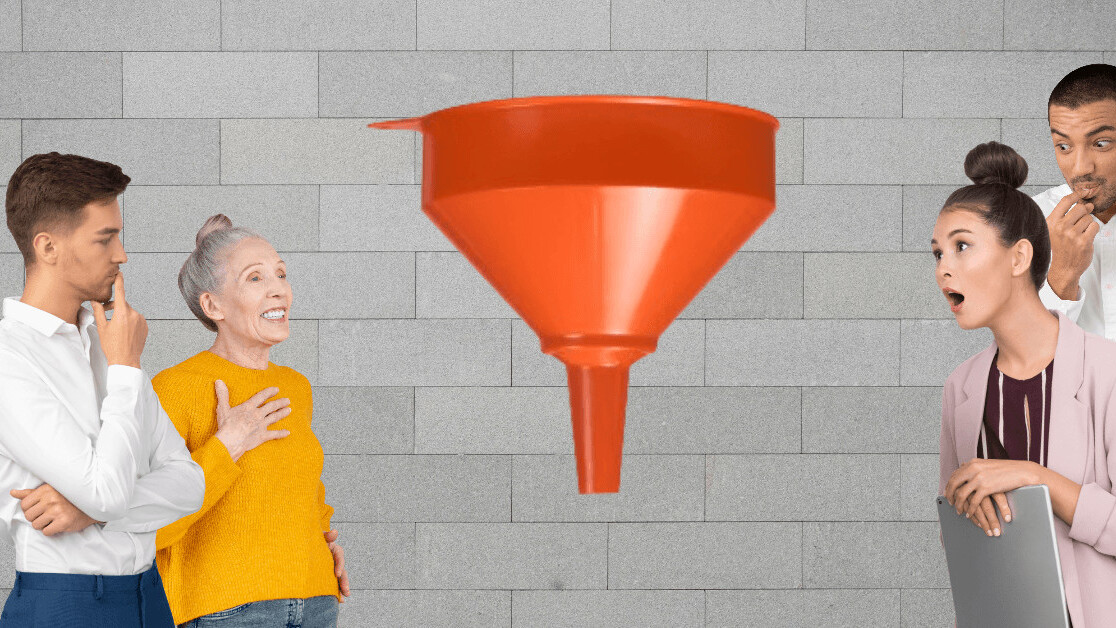Your B2B sales funnel is an incredibly important part of your business, but it’s also one of the most difficult to measure when it comes to efficiency. There are so many variables at play — including how efficient your software is, how effective your content is, and how persuasive your salespeople are — that it can be difficult to know how you’re doing.
Frustration around how to measure your sales cycle can often be compounded by the fact that your lead’s behavior and needs are changing. As technology advances, every company must try to keep up — and some are better at it than others. Your audience, which may have been somewhat homogeneous a few decades ago, becomes more diverse in their needs by the day. So how can you win over all of them?
The key is keeping in mind that while every customer is going to have different needs as far as compatibility, integration, and user experience, everyone is kind of looking for the same things when they’re deciding what to buy. They will judge how easy it is to get information about your products — including their prices — and then how easy and appealing your website is. Whether or not your salesperson has the tools to facilitate real-time-information regarding price or product will be critical as well.
To get the best results from your sales funnel, prioritize these foundations, while keeping in mind the individual nuances your specific target audience is interested in. In my experience, there are three specific categories in which companies of all levels fall short in improving their sales funnel:
Focus on efficiency
Everyone knows that B2B sales funnels are slow, but does it have to be this way? With new tools and technology, it’s becoming easier than ever to have a faster sales cycle, one that may even rival consumer brands.
What’s more, a funnel that your leads can speed through is becoming an expectation, instead of an impressive differentiator — even with considered B2B purchases, no customer (or sales rep) wants to slog through weeks or months just to get to the purchase point.
Make sure that you’re using all of the tools available to you throughout your funnel, so that nothing that could be automated or assisted by data-driven tools is still done by hand, and the client never has to give you the same information multiple times.
Prime examples of software that many brands are slow to adopt but make a huge difference in speed are:
- CPQ (configure, price, quote) software, which automates part or all of the process of creating customized quotes while allowing users to configure complex products and service on any device, which shortens the amount of time between customer inquiry and an answer and ultimately a sale.
- Personalization software, which gathers information from and about the users for later reference. Personalization software is mostly used to ensure that all contact with the client aligns with the preferences they’ve displayed so far, and that other products you offer that they may be interested in are displayed.
As a rule of thumb, if any part of your salesperson’s’ day is repetitive, there’s probably a software solution that can not only make them more efficient, but also improve the customer experience.
Invest in strategic content
A big problem that many business buyers complain of is that it’s incredibly difficult to find information about the products they’re looking for without contacting brands. If this seems like an unreasonable complaint to you, consider what their consumer experience is like now — for many purchases, they don’t need to interact with a person to get what they want.
Information about products, from reviews to measurements, is abundant. Then they come into the office and are tasked with finding the solution you offer; if they’re met with the brick wall that is the Contact Us page for every question, they’ll soon get frustrated and simply move on.
To avoid losing leads before you ever know they’re on your site, make sure that you put as much information about your products as possible up — but make sure that it’s well organized, high quality content that sells as well as informs.
If your product is highly customizable or complicated, consider compromising with a live chat feature. This is a great solution for keeping customers that don’t want to start a relationship yet, and need an answer right now, without requiring your website to become laden down and unwieldy.
Integrate your sales and marketing teams
No, sales and marketing are not the same thing, I’m well aware. However, there is an increasing need for these two teams to work closely together. They should share their metrics, collaborate on many of their goals, and ensure that messaging is consistent throughout all points of contact with customers.
This may seem like a fairly straightforward proposition, but it means uniting two departments that have, historically, not liked each other. To pull this off, it’s important to factor in your workplace culture, and the notions that many of your employees may have brought from previous positions.
In order to get the most out of your sales funnel, ensure that you’re focusing on offering the most efficient sales experience, while also keeping in mind the particulars of what your customers may specifically be looking for. Automation, personalization, and collaboration will all be key in optimizing your B2B sales funnel.
Get the TNW newsletter
Get the most important tech news in your inbox each week.






